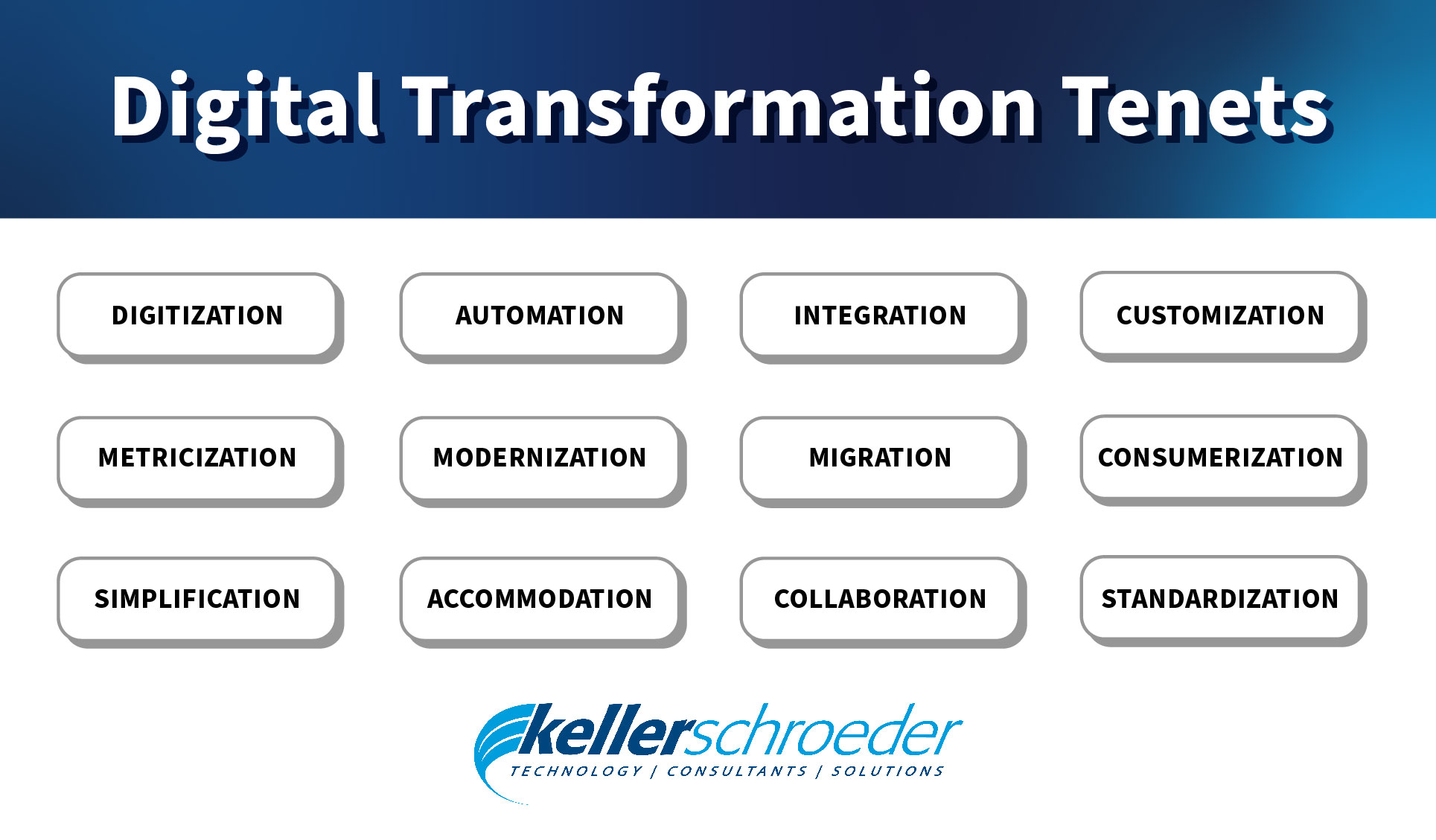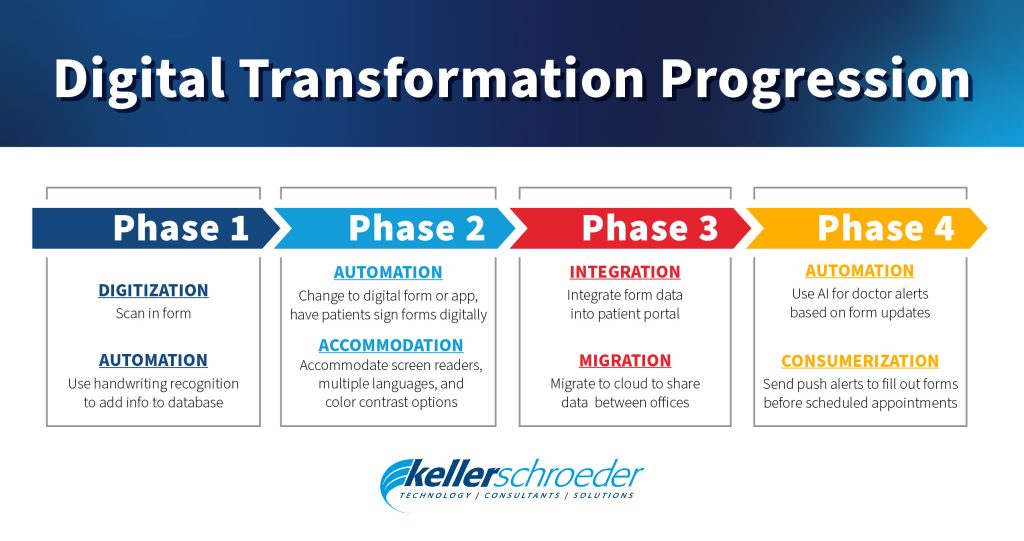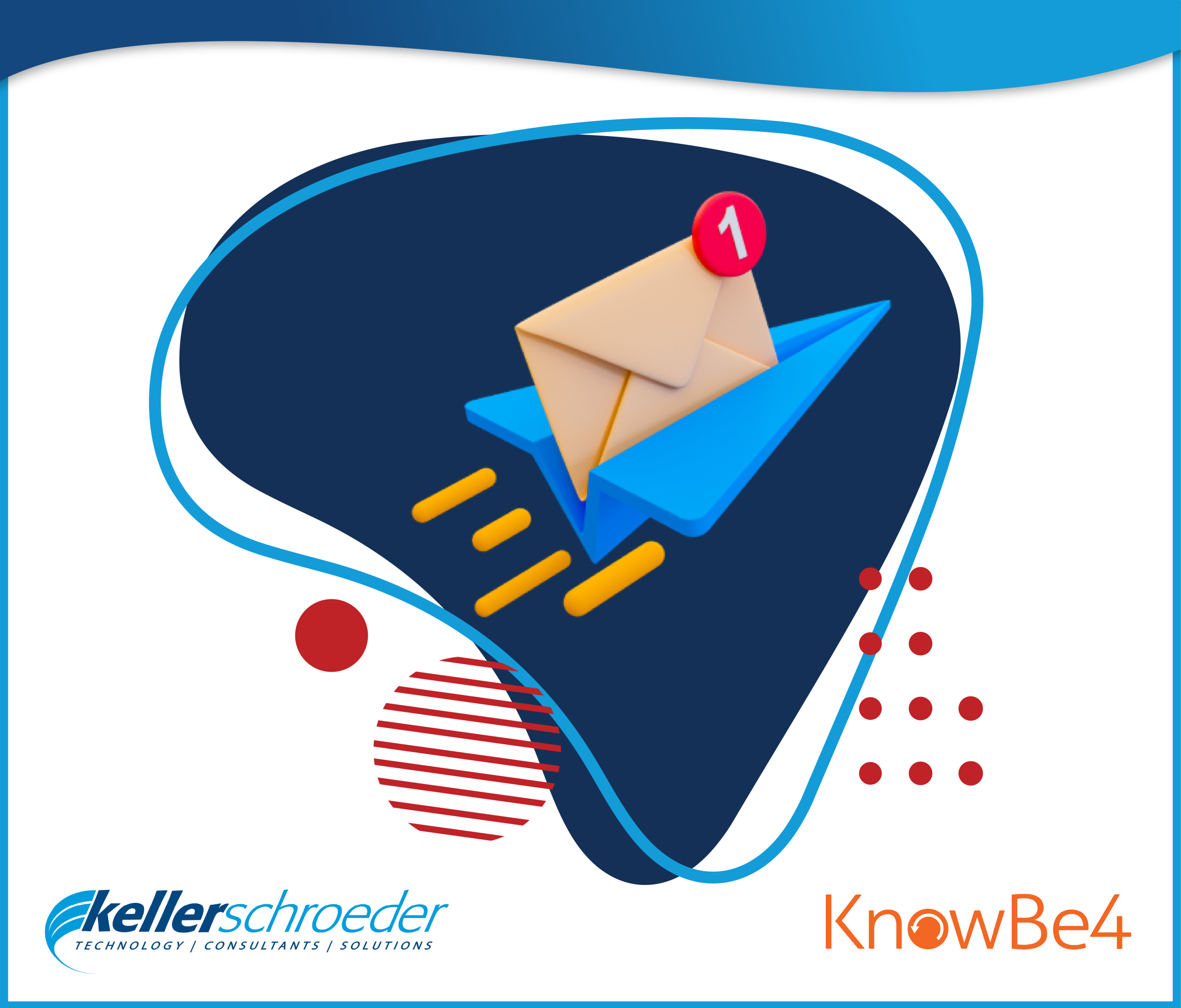Explore the journey of digital transformation with our guide on integrating digitization, automation, and continuous improvement into your processes.
The Headache
I’m sitting in the doctor’s waiting room, and it’s been a while since I’ve had an appointment. I must give them my newest insurance card, fill out and sign the medical information paper, HIPAA form etc. and hand it to a receptionist. They must key and scan that in and keep both the paper and digital records. Usually the doctor will ask me a few of those same questions in our session while they (or their physician assistant) record it in their computer. The current process, involving physical paperwork and redundant digital records, is time-consuming for both staff and patients, prompting thoughts about the potential for significant improvements.

Possible Transformations
A team trying to improve these processes using the tenets in our Digital Transformation Framework (DxF) might think they have to choose just one. How do we know which is the right one? Is digitization enough, or should some automation play a role?
Maybe we’d choose some automation; we could scan the paper, use handwriting recognition, and store that information in a database to be used by a software application. Or even better, we could have patients log into the system and fill out a form on their devices, skipping paper altogether.
How do we know which tenet and approach to choose? Which one will bring the most value, the most efficiency for our cost? The good news is, we don’t have to choose just one tenet to implement, and we can always add more later.
The Aspirin
Can you think of a moment in your life when you thought, “Well, that’s it, I’ve improved this as much as I can and now I’m done.” I can’t either. I’m always learning new ideas, tips and tricks to make something better, cheaper, or more efficient. I learn a new cooking hack or a better way to organize my closet. I learn better time-management or mental health strategies to help get me through the week. We can apply the same approach of incremental change to digital transformation.
Instead of viewing the digital transformation as a one-time shift from A to B, think of it more as a progression, something we add to with time. Maybe your solution will eventually go through most or even all the tenets in our framework. Don’t agonize over the perfect approach; the key is to begin the journey. In our framework, we talk about “low-hanging fruit” – quick wins that will bring immediate value. These can be the catalyst for future advancements. What begins as a step towards digitization could naturally lead to automation, integration with other systems, and a user-friendly interface that accommodates all users. You might find later that you need some customization to get the most out of your system. Once you see the value and efficiency that your first initiative brings, you’ll start to see a way forward to other improvements you could make.
I don’t think all 12 tenets will work for all situations, nor would I recommend trying to incorporate everything at once. The importance lies in staying open to multiple ideas and embracing the concept of continuous and incremental improvement. Our DxF also contains a roadmap for a practical approach to digital transformation: Identify, Prioritize, Execute, and Learn. This reinforces the idea that transformation is cyclical, not a one-time journey with a beginning and end. Below is one approach of taking our “paper medical forms” example and methodically working in different tenets of the Digital Transformation Framework. This could eventually lead to a robust, efficient system saving all stakeholders time and money while improving the quality of the information and overall experience.

Embrace the Unknown
Technology moves fast; it’s always changing. In five years, there may be a new device, technology, or process that revolutionizes your business, especially now that we’re in the age of Artificial Intelligence (AI). If you’re already in a digital transformation mindset and continuously working to improve your processes, these new technologies might be an enhancement you can add in seamlessly. But if you’re thinking of your processes as fixed and have a “one and done” approach to digital transformation, you can eventually grow stale and lose your competitive edge.
Get Started
If you’re unsure where to start, a good first step could be to analyze an existing process in your business that needs improvement. Read this article “Process Analysis with ‘Man’s Best Friend’” as a helpful guide to get started. If you still aren’t sure where to start your digital transformation journey, ask us to help. Fill out this form to get started. If you feel like you’ve reached the current limits with which you can transform your processes using these tenets, it may be time to contact our Data Strategy Group about AI and Machine Learning possibilities to keep you on the cutting edge.
Think digital. Embrace clarity. Increase advantage.
Written By:

Alison Childers
Applications Consultant
Applications Solutions Group




